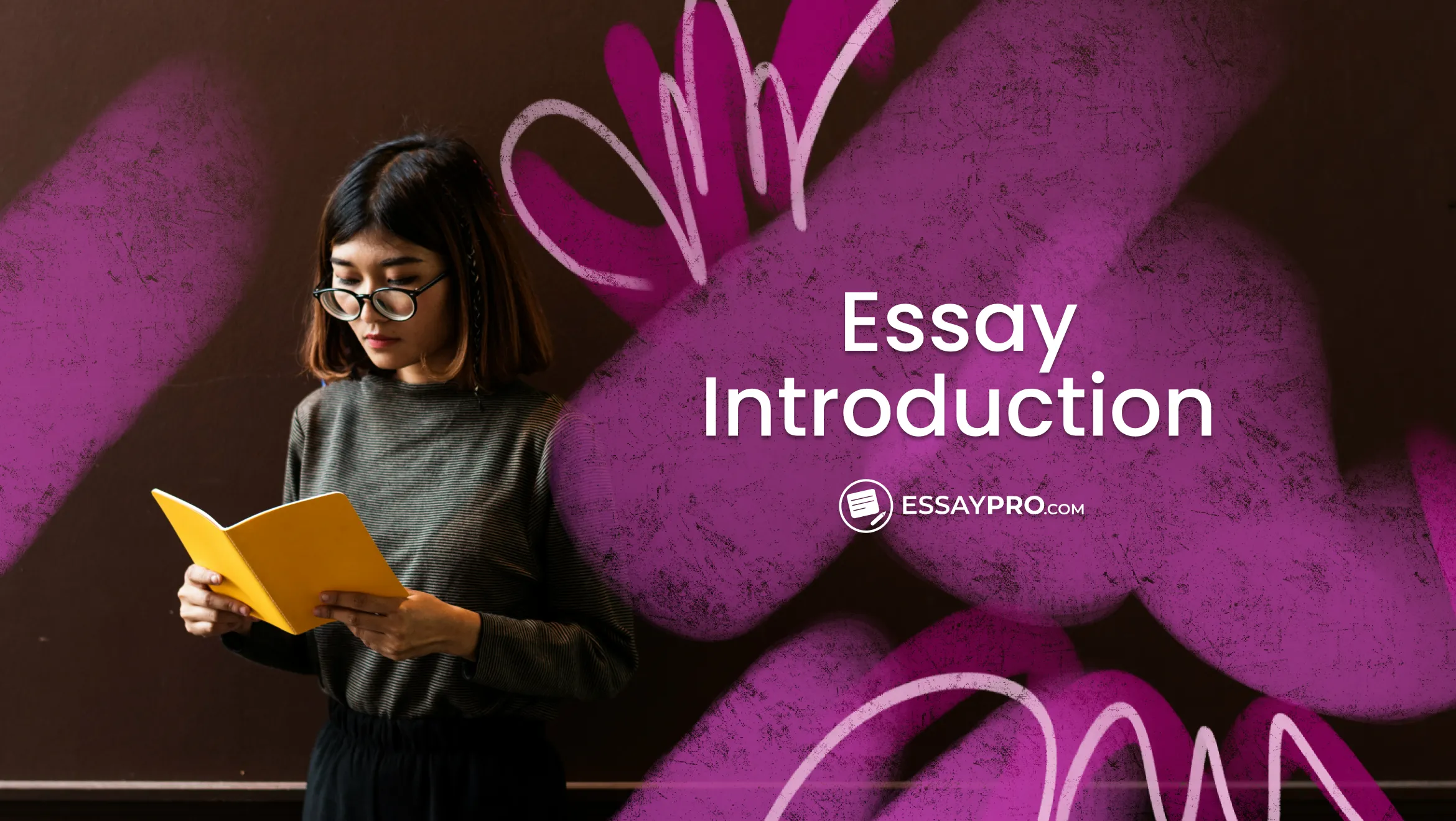Beneath the surface of every well-crafted piece of writing lies an often overlooked but essential element: tone. Did you know that Ernest Hemingway, renowned for his succinct and straightforward prose, once wrote an entire short story in just six words? This astonishing feat highlights the immense power that tone holds in conveying emotions and messages concisely.
Types of Tone in Writing: Short Description
In this guide, you'll learn about 10 basic types of tones in writing and how to use them effectively. Our paper writing service experts will show you examples and tips to help you understand how each tone creates feelings and messages. By the end, you'll know how to use tones to make your writing truly impactful and memorable for your readers. Armed with this knowledge, you'll have the tools to infuse your own writing with the perfect tone for the occasion. Whether you're aiming for a heartfelt narrative, a persuasive argument, or a piece that sparks curiosity, you'll be able to craft words that resonate deeply with your readers, leaving an impression that lingers long after they've finished reading.
What is Tone in Writing: Grasping the Idea
Imagine your favorite song playing on a piano. The same notes can create vastly different feelings – a light-hearted melody, a melancholic tune, or an intense crescendo. Just like in music, the words you use in writing can evoke emotions and set the mood. This magical ingredient that influences how your words are perceived is known as 'tone.'
Examples of tone in writing are the attitude, emotion, or mood that comes across in your words. It's not just about what you say but how you say it. Think of it as the emotional coloring that tints your writing, giving it depth and resonance. The right tone can make your words dance off the page, making them memorable and impactful.
Tone refers to more than just a mere linguistic element within a composition; it's a crucial tool that shapes how readers experience your writing. It influences how they feel, how they connect with the content, and even how they interpret the information. Whether you're crafting a compelling story, delivering an informative article, or sharing your thoughts, the right tone can make your writing resonate on a whole new level.
The tone isn't one-size-fits-all. Just as you adapt your tone of voice when speaking to different people, your writing tone should adjust to your audience and purpose. It can range from professional and formal writing tone to casual and conversational. Want to engage young readers? A playful tone might be the way to go. Need to address a serious topic? A respectful and serious tone is apt.


How to Develop Your Writing Tone
Much like an artist intricately combines hues to forge a mesmerizing masterpiece, a writer conscientiously crafts sentence structure to weave a captivating enchantment upon their readers. The composition of sentence structures is a craft that entails comprehending one's distinctive voice, the inclinations of the intended audience, and the sought-after emotional resonance.

1. Know Thyself: Embrace Your Authentic Voice
The journey towards developing your overall tone, even when tackling essay topics, begins with self-discovery. Reflect on your natural speaking style, your personal experiences, and your unique way of expressing thoughts. Are you naturally witty? Do you tend to be straightforward? These qualities can be the building blocks of your distinct tone, even when addressing essay topics. Embrace your authentic voice; your readers will appreciate your sincerity.
2. Listen and Learn: Understand Your Audience
Imagine performing a song for an audience of jazz enthusiasts versus a group of classical music aficionados. The song remains the same, but the rendition differs based on the audience's preferences. Similarly, your writing tone should cater to your readers' expectations and comfort zones. Research their interests, language preferences, and the style of content they engage with. This insight helps you strike a chord with your audience.
3. Setting the Mood: Match Tone with Purpose
Just as a chef selects ingredients to suit a specific dish, adapt your tone to your writing's purpose. If you're crafting a heartwarming story, a tender and nostalgic tone might be perfect. For an analytical piece, a tone of logic and clarity works wonders. Aligning your tone with the intended emotional response enhances the impact of your writing.
4. Experiment and Evolve: Flexibility is Key
Think of your writing tone as a chameleon, capable of adapting to diverse situations. Don't hesitate to experiment with different tones. Try a humorous tone for one piece and a contemplative tone for another. Through experimentation, you'll discover your range and refine your ability to switch tones effortlessly, like a skilled actor embodying various roles.
10 Different Types of Tones
In the following sections, we'll journey through ten distinctive writing tones. Each tone is like a tool in your writing toolkit, ready to be wielded to create the impact you desire. By the end of this exploration, you'll be equipped not only to recognize these tones in your favorite pieces of writing but also to employ them to craft content that leaves a lasting impression.

- Formal
A formal tone in writing is characterized by its polished and professional demeanor. This tone is frequently employed in various contexts, including academic papers following the Chicago style format, official documents, and business communications. This tone employs sophisticated vocabulary and avoids contractions and colloquial language. For example, a formal tone might be used in an academic research paper discussing the socioeconomic impacts of climate change on global economies.
'In accordance with the aforementioned legislation, it is imperative to adhere to the stipulated guidelines in order to ensure compliance. Failure to do so may result in potential legal ramifications.'
- Informal
An informal tone in writing is more relaxed and conversational. It mimics the way people speak casually and is often used in personal emails, blog posts, and friendly communications. Informal tones in writing may include contractions and colloquialisms. For instance, an informal conversational tone could be used in a travel blog describing an adventurous journey, engaging readers with a relatable and friendly approach.
'So, imagine you're at this amazing concert, right? The music's blasting; everyone's dancing like there's no tomorrow. And then suddenly, out of nowhere, the lead singer jumps into the crowd! Like, whoa, talk about a crazy show!'
- Optimistic
An optimistic writing tone exudes positivity and hope. It's like a sunbeam breaking through the clouds, infusing a piece with enthusiasm and confidence. This tone inspires and uplifts, often using bright language and focusing on the potential for good outcomes. For instance, in a motivational blog post, an optimistic tone might encourage readers to embrace challenges as opportunities for growth, stating:
'Every setback is a chance to spring forward even higher.'
- Worried
A worried writing tone reflects unease and concern, akin to a storm cloud hovering overhead. It conveys a sense of urgency and vulnerability, using language that expresses doubt or apprehension. In a suspenseful novel, a worried tone might create a tense atmosphere as the protagonist navigates a perilous situation, evoking emotions with lines like:
'As the minutes ticked by, an unsettling feeling gnawed at the edges of her thoughts, making her wonder if escape was even possible.'
If you opt to explore various definition essay topics, it opens the door to employing a worried tone, particularly in scenarios such as explaining 'existentialism.' Through your words, you could convey the unsettling realization that, in the vast cosmos, humans grapple with their individual significance, with each path they choose carrying a weight of consequence. This worried tone could evoke a sense of shared contemplation, connecting readers to the disquieting yet profoundly human questions that underlie the philosophy of existentialism.
- Friendly
A friendly writing tone is warm and approachable, akin to a welcoming smile. It establishes a connection with the reader, making them feel like they're having a chat with a close friend. This tone uses inclusive language and may even sprinkle in personal anecdotes. For instance, in a blog post about a new recipe, a friendly, uplifting tone might say:
'Hey there! Today, we're diving into the world of delicious desserts. I stumbled upon this amazing chocolate cake recipe that's sure to satisfy your sweet tooth.'
- Curious
A curious writing tone is like a detective's eager pursuit of answers. It sparks intrigue and invites readers to explore alongside the author. This tone uses questions, prompts, and a sense of wonder to engage the audience. For example, when you want to learn how to start an essay with a curious tone, you can captivate readers in the following way:
'Have you ever wondered what lies beyond the twinkling stars? Join us on a journey as we venture into the mysteries of the cosmos and uncover the secrets of the universe.'
- Aggressive
An aggressive writing tone is forceful and confrontational, aiming to provoke a strong reaction. It employs strong language and harsh rhetoric and may even involve personal attacks. In a debate article, an aggressive or tense tone might state:
'It's absolutely baffling that anyone could support such a flawed policy. Those who do clearly lack any understanding of basic economics.'
- Assertive
An assertive writing tone is confident and self-assured, expressing opinions firmly without resorting to hostility. It uses clear language and evidence to support its stance. For instance, in a persuasive essay on climate change, an assertive tone might state:
'The scientific consensus is undeniable: human activities contribute significantly to global warming. Addressing this issue requires collective action and policy changes.'
- Surprised
Exploring different types of tones in writing can greatly enhance the overall emotional impact and engagement of the content. A surprised writing tone mirrors the raised eyebrows and widened eyes of someone caught off guard. It conveys astonishment or amazement, often using exclamations or vivid descriptions. In a travel blog recounting unexpected wildlife encounters, a surprised tone might convey:
'As we rounded the bend, a majestic eagle swooped down from the sky, and we were left utterly speechless by this breathtaking spectacle!'
- Cooperative
A cooperative writing tone promotes collaboration and teamwork, fostering a sense of unity among readers. It employs inclusive language and encourages shared understanding. You can also adopt this tone when learning how to write a complaint letter, emphasizing the importance of expressing concerns while maintaining a constructive and respectful approach. In a how-to guide for successful group projects, a cooperative tone might suggest:
'By pooling our strengths and working together, we can create an environment where each member contributes their unique skills, resulting in a project that surpasses expectations.'
Wrapping Up
This guide, prepared by our custom research paper writing experts, offered valuable insights to assist you in selecting the right tone, breathing life into your words. Mastering the art of using different types of tone in writing is a skill that can elevate your communication to new heights. By understanding the nuances of various tones and tailoring them to your audience, purpose, and subject matter, you can create content that resonates, engages, and leaves a lasting impact!
Transform Your Paper with the Expertise of Our Writers!
From persuasive to poetic, we've got the tones covered. Order now to experience the magic firsthand!
FAQ
How to Choose Proper Types of Tone in Writing?
Choosing the right tone in communication involves considering the context, audience, and purpose of your message. Here are some steps to help you choose your tones informal or academic writing wisely:
- Consider the Context: Take into account the situation, platform, and medium you're using. Different settings may call for different tones.
- Balance Emotion: Gauge the emotional intensity of your message. Use a tone that appropriately conveys emotions without overwhelming your audience.
- Be Authentic: Choose a tone that resonates with your own voice and personality. Authenticity helps build trust and connection.
- Use Examples and Comparisons: Compare your intended tone to similar communication styles, either in your field or in literature, to guide your choice.
- Test and Iterate: If possible, gather feedback from peers or mentors. Adjust your tone based on their insights and reactions.

Daniel Parker
is a seasoned educational writer focusing on scholarship guidance, research papers, and various forms of academic essays including reflective and narrative essays. His expertise also extends to detailed case studies. A scholar with a background in English Literature and Education, Daniel’s work on EssayPro blog aims to support students in achieving academic excellence and securing scholarships. His hobbies include reading classic literature and participating in academic forums.






